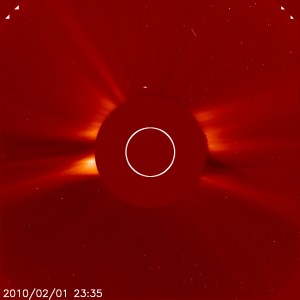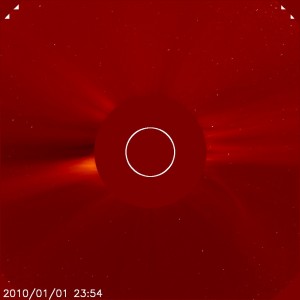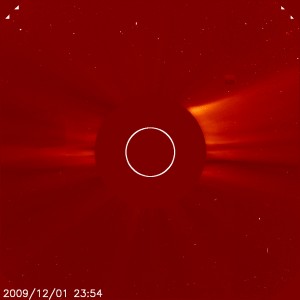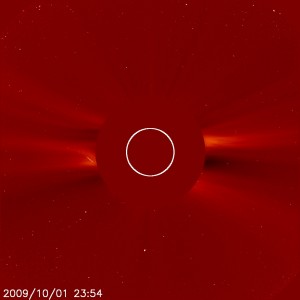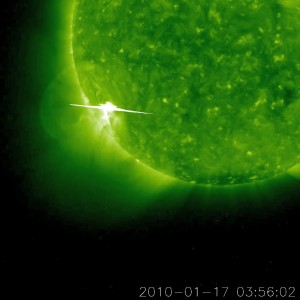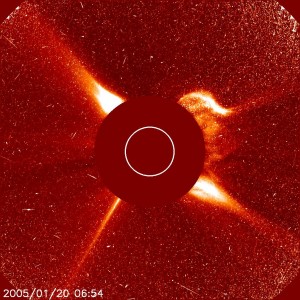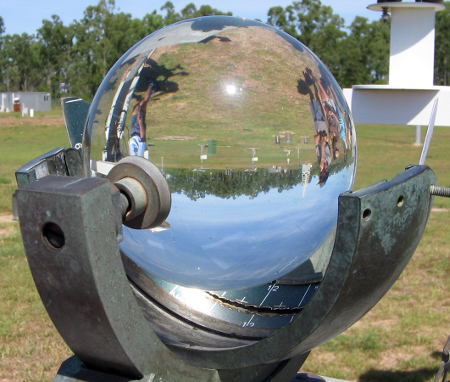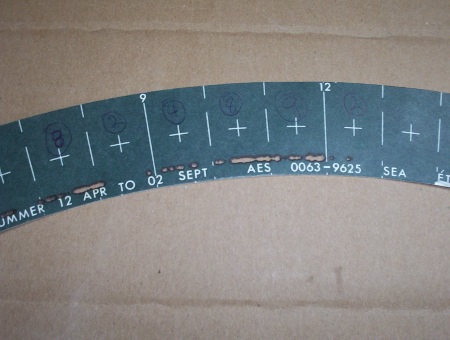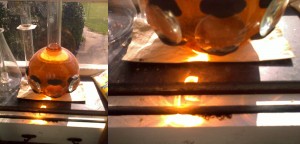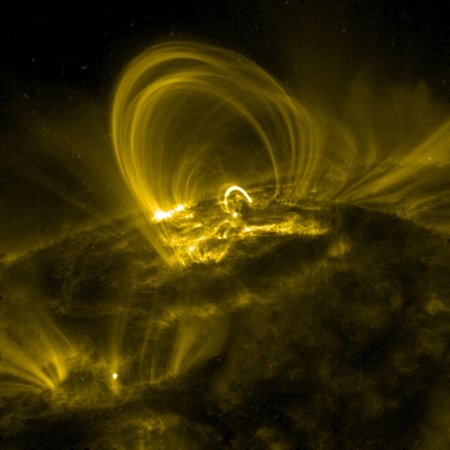The Sun (the big floaty fireball, not the awful “newspaper”) has been in the news lately as it’s been predicted that the Sun may interfere with the 2012 Olympics. It’s been suggested that solar flares, ejections of material from the Sun’s surface; and the solar wind, a fast-moving stream of charged particles (normally responsible for the Northern and Southern Lights (Aurora Borealis and Aurora Australis)), could affect the satellites that are responsible for relaying television footage from the Games around the globe.
Over the last few years the Sun has been in an unusually quiet mood, but recently it seems to be “waking up”. Looking at images from the Solar and Heliospheric Observatory (SOHO) Large Angle Spectrometric Coronagraph (LASCO) you can see a clear difference between images taken now and images taken in past months.
Tuesday:
Last Month:
December:
October:
SOHO picked up its largest solar flare in two years on January 22nd:
At the time of writing the solar wind is running at somewhere between 300km and 400km per second with between 2 and 4 protons per cubic metre [source]; this is nothing to worry about. The concern is that by the time the Olympics come around we might be experiencing periods of solar weather like in January 2005 during a severe solar storm.
